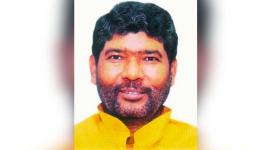Enrolment Fell in Government Schools in 2017-18, Says Study
Image for representational use only.Image Courtesy : Livemint
While elementary and secondary school expenditure per student increased in some of India’s poorest states including Bihar, Madhya Pradesh (MP), Rajasthan and Odisha in 2017-18 as compared to 2014-15, enrolment in government schools fell during the same period, according to an analysis of eight states by the Delhi-based think-tank Accountability Initiative. The eight states analysed by the report are Bihar, Maharashtra, West Bengal, Madhya Pradesh, Rajasthan, Tamil Nadu, Odisha, and Himachal Pradesh.
It was pointed out by the report that while most states in India have been able to achieve near universal enrolment at the elementary level, the enrolment rates have been far lower at the secondary level. Even at the elementary level, poor quality of learning in government schools, teacher vacancies and absenteeism, quality of infrastructure facilities, and low transition rates to secondary level, still remain major concerns.
The report said that the share of education funds dedicated towards ‘Teacher Training’ has been extremely low and was less than or equal to 1% for six of thesample states during FY 2016-17.The situation was similar in FY 2017-18, except for Tamil Nadu, which spent 5% of total school education funds on ‘Teacher Training’. The proportion of school education finances dedicated towards ‘Quality’ initiatives including Information and Communication Technology (ICT) infrastructure ranged between 1% to 3%. Similarly, the share going into ‘Monitoring and Inspection’ of schools also ranged between less than 1% to 3%.
It said, “Teacher Salaries constitute an overwhelmingly large share of state education finances.” Categorisation of school education finances across functional areas revealed that the share of ‘Teacher Salaries’ in school education expenditure ranged from 71% in Odisha to 84% in Rajasthan. As expected, the proportion of a state’s own resources spent on salaries of teachers is higher than that of the Union government instruments. For instance, during FY 2017-18, while the share of states’ own resources spent on ‘Teacher Salaries’ was around 90% for Tamil Nadu and Himachal Pradesh, the share of Centrally Sponsored Schemes (CSSs) and Central Sector (CS) schemes spent for this purpose was much less at 33% and 40%, respectively.
Also read: Under Modi, Cost of Education Has Exploded
The reliance on CSSs for elementary education financing was found to be considerably higher for Bihar and Rajasthan, while economically better-off states such as Maharashtra and Himachal Pradesh are seen to be less dependent on CSSs as an instrument of financing school education. In FY 2014-15 and FY 2017-18, the share of expenditure through CSSs stood at 6% to 7% in Maharashtra. Similarly, the CSSs share for Himachal Pradesh was 11%. On the other hand, CSSs played a dominant role in Bihar, accounting for around half of the overall spending. Despite an overall decline in Union government devolution for CSSs between FY 2014-15 and FY 2017-18, there has been a considerable increase in the share of CSSs in Bihar. Moreover, the contribution of CSSs was observed to be much higher in elementary education than in secondary. During FY 2017-18, Bihar financed almost two-thirds (65%), and Rajasthan financed more than half (55%) of their expenditures on elementary education through CSSs. Maharashtra and Himachal Pradesh, spent 10% and 14%, respectively through CSSs schemes on elementary education.
The amount spent per student varied across states, from Rs 9,573 in Bihar to Rs 59,499 in Himachal Pradesh. On average, all the states spent more per student at the secondary level (grades 9 to 12) as compared to the elementary level (grades 1 to 8), the study found.

Among the eight states, Bihar had the largest number of students (2.16 crore) in government and government-aided schools in 2017-18. Himachal Pradesh, the smallest of the eight states analysed, had the least, with 900,000 students. Other than Rajasthan, where more students enrolled in government schools in 2017-18 (83 lakh) compared to 2014-15 (76 lakh), enrollment fell in all states analysed.

School education as a proportion of total state budget expenditures ranged between 10% in Madhya Pradesh to 17% in Maharashtra and West Bengal, during FY 2017-18. Bihar was the third highest spender with 15% of the total expenditure spent on school education, followed by Rajasthan at 14%.
During FY 2017-18, while Bihar spent the largest share of its total school education expenditure on elementary level at 76%, Rajasthan spent the lowest at 42%. It is important to mention here that the share of expenditure dedicated to a particular level of education is likely to be directly proportional to the share of total enrolment in government and government-aided schools at that level.
The report said,“Unlike universal access to elementary education for all children in the 6 to 14 years age group, access to secondary education is yet not mandated in India under the Right of Children to Free and Compulsory Education (RTE) Act.”
The report added that during and in the aftermath of the COVID-19 pandemic, “it will be critical to take measures to ensure that all children have equal access to school education and no one is left behind in multi-mode attempts at education delivery.”
Get the latest reports & analysis with people's perspective on Protests, movements & deep analytical videos, discussions of the current affairs in your Telegram app. Subscribe to NewsClick's Telegram channel & get Real-Time updates on stories, as they get published on our website.























